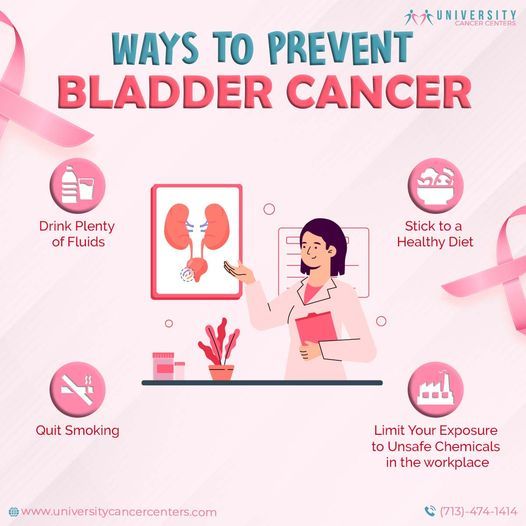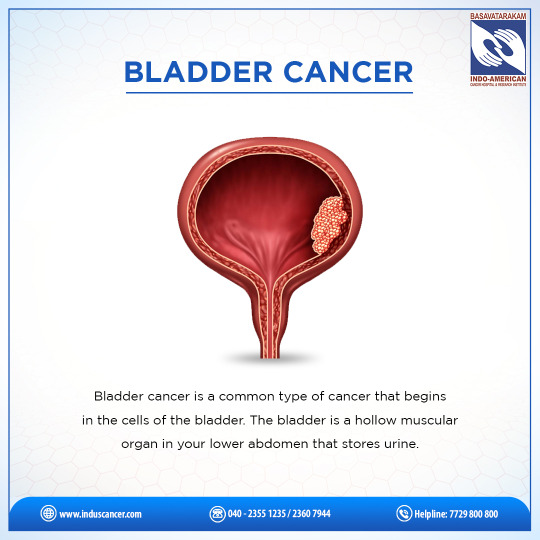#BladderCancer
Explore tagged Tumblr posts
Text

According to 2016 U.S. data bladder cancer mostly affects older people. About 90% of people with bladder cancer are older than 55. The average age people are diagnosed with bladder cancer is 73.
#endometriosis#endometriose#overactivebladder#bladderproblems#bladder#chronicillness#chronischziek#chronicpain#painproblems#1in10#pelvicfloorexercises#diastasisrecti#pelvicfloorphysio#bladderhealth#coreworkouts#universitycancercenter#bladdercancer
4 notes
·
View notes
Text
Abstract— The aim of the study was to determine an association of the UGT1A1 (rs8175347), MTHFR (rs1801133), GSTP1 (rs1695), and ITPA (rs1127354) polymorphic variants with response to platinum-based chemotherapy in patients with bladder cancer. The study group consisted of 60 patients who were treated in the National Cancer Institute. The population control groups were formed from conditionally healthy adults from different regions of Ukraine. The commercial DNA extraction kits were used to isolate genomic DNA from the blood samples of patients and the control group. Genotyping of the MTHFR, GSTP1, and ITPA alleles was carried out using PCR followed by RFLP analysis. The determination of UGT1A1 allelic variants was conducted by a method of fragment analysis of fluorescently labeled PCR products using an ALF-express II automatic laser analyzer. No significant difference was detected in the distribution of allele and genotype frequencies of the UGT1A1, MTHFR, GSTP1, and ITPA gene polymorphisms between the population sample and studied group of patients with bladder cancer. In addition, no statistically significant difference was detected in the distribution of allele and genotype frequencies for the polymorphic loci of the UGT1A1, MTHFR, and ITPA genes in codominant, dominant, and recessive models between the groups of patients with bladder cancer who had a positive response to chemotherapy and those who had no response to the therapy. It was demonstrated that the frequency of the GSTP1 gene 313G allele (0.40) was statistically significantly higher in the group of patients who responded to chemotherapy than in the group of patients who did not respond to the treatment (0.22). It was established that carriers of the GSTP1 gene 313G allele (AG and GG genotypes) have a higher probability of a positive response to chemotherapy than individuals with the AA genotype (OR = 3.05; CI 95%: 1.053–8.838). It was demonstrated that the GSTP1 gene A313G polymorphism (rs1695) is associated with a response to chemotherapy with platinum-based drugs, including cisplatin. The presence of the 313G allele in the patient genotype can indicate a better sensitivity of the tumor to platinum-based drugs.
#bladdercancer#pharmacologicalmarkers#responsetochemotherapy#UGT1A1#MTHFR#GSTP1#ITPA#cancer#chemotherapy
0 notes
Text

Learn about the early warning signs of bladder cancer and how recognizing symptoms early can make a difference in treatment and outcomes. From blood in urine to frequent urination, understanding these key signs is crucial for early detection and prevention. Explore effective bladder cancer treatment options in Delhi with expert care and advanced medical techniques. Stay informed, stay healthy!
#BladderCancer#CancerAwareness#EarlyDetection#HealthTips#CancerPrevention#BladderHealth#HealthEducation#CancerSymptoms#WellnessJourney#StayHealthy#BladderCancerAwareness
0 notes
Text
#DrVipinSisodia#DrDevendraKumarBabbar#BLADDERCANCER#kidneystone#symptoms#ProstaticHyperplasia#kidneydisease
0 notes
Text

Are you experiencing pain💊💊 while urinating? If yes, it could be due to kidney stones, prostate infection, urinary tract infection, bladder cancer, sexually transmitted infection, or cystitis or something else…Know the right cause of pain by visiting a urologist👨⚕️👨⚕️ as painful urination is not normal and needs further evaluation. Determining the right cause of the pain will be the first step towards starting the treatment. Visit a urologist at the earliest so that the correct diagnosis can be made and the right treatment started.
9818 228 777
#painfulurination#kidneystones#prostateinfection#urinarytractinfection#bladdercancer#sexuallytransmittedinfection#cystitis#urologistingurgaon
1 note
·
View note
Text
youtube
#oncology#cancer#GenitourinaryOncology#BladderCancer#KidneyCancer#ProstateCancer#TesticularCancer#PenileCancer#UrinarySystem#Youtube
0 notes
Text
Men's Health Alert: Don't ignore early signs of urinary bladder cancer like painless bleeding in urine and lower abdominal pain. Discover how simple tests can aid early detection. Stay informed and proactive.
youtube
0 notes
Text

Bladder cancer can significantly impact a person's physical and emotional well-being. Early diagnosis and treatment can minimize these disruptions and allow individuals to maintain a good quality of life.
For more information contact
Mob: +91-7055514537
Book your appointment today - https://gshospitals.in/appointment.php
Address: - NH-9, Near Railway Station Pilkhuwa, Hapur (U.P.)
#BladderCancer#GSHospital#GSCancerResearchInstitute#GSMedicalCollege#GSAyurveda#GSNursing#DelhiNCR#Ghaziabad#UttarPradesh#India
0 notes
Text

One prevalent form of cancer that starts in the bladder's cells is bladder cancer.
According to The American Cancer Society's estimates for bladder cancer in the United States for 2023 are: About 82,290 new cases of bladder cancer (about 62,420 in men and 19,870 in women) About 16,710 deaths from bladder cancer (about 12,160 in men and 4,550 in women)
#endometriosis#endometriose#overactivebladder#bladderproblems#chronischziek#chronicpain#painproblems#universitycancercenter#bladdercancer#coretraining#coreworkouts#bladderhealth#pelvicfloorphysio#diastasisrecti#pelvicfloorexercises
3 notes
·
View notes
Text


What is Bladder Cancer? Bladder cancer primarily starts in the cells lining the inside of the bladder. It can occur in any part of the bladder and, if untreated, can spread to nearby tissues or other parts of the body. Signs and Symptoms of Bladder Cancer: Blood in Urine (Hematuria): The most common sign, it may cause urine to appear red or cola-colored, although it sometimes appears normal and blood is detected only on a lab test. Frequent Urination: An increased need to urinate more often than usual. Painful Urination: Discomfort or burning sensation during urination. Urgency: A sudden, strong need to urinate. Pelvic Pain: Discomfort or pain in the lower abdomen. Back Pain: Particularly in the lower back. Inability to Urinate: In some cases, individuals may experience difficulty passing urine. Early detection of bladder cancer significantly improves the chances of successful treatment. If you notice any of these symptoms, it’s crucial to consult a healthcare professional for further evaluation. Stay informed and proactive about your health.
#bladdercancerawareness#knowthesigns#BladderCancer#BasavatarakamCancerHospital#EarlyDetectionSavesLives#IndoAmericanHospitalHyderabad#indoamericanhospital#IndoAmericanCancerHospital#best cancer treatment in india#best cancer hospital#indo american cancer hospital#best cancer hospitals in india#basavatarakam hospital#indo american hospital#basavatarakam cancer hospital#basavatarakam#basavatarakamcancerhospital basavatarakam#best cancer specialist in india
0 notes
Text

The Connection Between Smoking & Cancer and Resources to Help Quit
Introduction
As an integrative doctor specializing in oncology, I have witnessed the devastating impact of cancer on many lives. The association between smoking and cancer is well-established and supported by extensive scientific research. Tobacco contains over 7,000 chemicals, with at least 250 known to be harmful, and more than 60 recognized as carcinogens. When these toxic substances are inhaled into the lungs, they can initiate a cascade of events that lead to cancer formation. It’s important to note that even non-smokers exposed to secondhand smoke are at risk. Secondhand smoke contains many of the same carcinogens, putting individuals who inhale smoke at an increased risk of developing cancer.
How Exactly Does Smoking Cause Cancer?
1. DNA Damage: Tobacco contains benzene, formaldehyde, and polycyclic aromatic hydrocarbons (PAHs), which can directly damage our DNA. This damage can result in mutations that promote the uncontrolled growth of cancer cells.
2. Inflammation: Smoking causes chronic inflammation in the lungs and other organs. Persistent inflammation can create an environment conducive to cancer development.
3. Impaired Immunity: Smoking weakens the immune system, making it less effective at identifying and destroying cancer cells. This increases the likelihood of cancerous cells escaping detection and spreading.
Common Cancers Associated with Smoking
1. Lung Cancer: Smoking is the leading cause of lung cancer, responsible for approximately 85% of all cases.
2. Head/Neck/Throat Cancers: Smoking increases the risk of cancers in the mouth, throat, and esophagus, mainly due to direct exposure to carcinogens.
3. Bladder Cancer: The harmful chemicals in tobacco can enter the bloodstream and affect the bladder lining, increasing the risk of cancer development.
4. Cervical Cancer: Smoking has been linked to an increased risk of cervical cancer, especially in women infected with human papillomavirus (HPV).
5. Pancreatic Cancer: Smokers are at a higher risk of developing pancreatic cancer, and this cancer is often diagnosed at an advanced stage, making it more challenging to treat.
Tools and Strategies for Smoking Cessation
Quitting smoking is one of the most important steps individuals can take to reduce their cancer risk. Fortunately, there are various tools and strategies available to help individuals overcome addiction.
1. Behavioral Therapy: Behavioral therapy, including individual counseling, support groups, and hypnotherapy, can provide valuable emotional support and teach coping strategies to deal with triggers and stressors.
2. Stress Reduction Techniques: Practices like prayer, mindfulness, meditation, yoga, and deep breathing exercises can help individuals manage stress and reduce the urge to smoke as a coping mechanism.
3. Acupuncture: Acupuncture can assist in smoking cessation by reducing cravings, lessening irritability and restlessness, increasing relaxation, and helping to detoxify the body.
4. Mobile Apps and Online Resources: There are numerous apps and websites designed to support individuals on their journey to quit smoking. These resources offer tracking tools, motivation, and access to communities of people facing similar challenges. Check out some of these here, https://www.verywellmind.com/best-quit-smoking-apps-5092426.
5. Nicotine Replacement Therapy (NRT): NRT includes products like nicotine gum, patches, lozenges, and inhalers. These products provide a controlled dose of nicotine to help reduce withdrawal symptoms while gradually weaning individuals off cigarettes.
6. Prescription Medications: Medications like bupropion (Zyban) and varenicline (Chantix) can be prescribed by healthcare professionals to aid in smoking cessation. These drugs work by reducing cravings and withdrawal symptoms.
Conclusion
The link between smoking and cancer is indisputable, and the evidence supporting this connection is overwhelming. Smoking not only increases the risk of lung cancer but also contributes to various other cancers throughout the body. Quitting smoking is one of the most effective ways to reduce cancer risk and improve overall health.
If you or someone you know is struggling with smoking addiction, don't hesitate to seek help. There are many tools, strategies, and healthcare professionals available to provide support on the path to becoming smoke-free. Remember, it's never too late to quit smoking and reduce your risk of cancer and other smoking-related diseases.
Additional Resources:
National Resources to Help Quit Smoking
San Diego Resources to Help Quit Smoking
#cancer#lungcancer#headneckthroatcancer#pancreaticcancer#cervicalcancer#bladdercancer#smoking#smokingcessation#quitsmoking#cigarette#vaping#integrativeoncology#eastwestintegrativeoncology#yourcancerguru
1 note
·
View note
Text
youtube
Recognizing the Key Symptoms of Urologic Cancer
Having a family history of urological cancer is a cause for concern. Knowing the risk factors and taking steps to avoid them can help you significantly reduce your chances of developing the disease. This video shares the symptoms of common urological cancers, including bladder, kidney, prostate, testicular, and penile cancer.
If you experience any of these symptoms, don't hesitate to see a urologist in Singapore for a proper diagnosis and timely treatment. Early detection is crucial for successful outcomes.
#UrologicCancer#UrologicalCancer#UrologicalHealth#MensHealth#ProstateCancer#BladderCancer#KidneyCancer#Youtube
0 notes
Text

i𝘁 𝗱𝗼𝗲𝘀𝗻’𝘁 𝗵𝗮𝘃𝗲 𝘁𝗼 𝗯𝗲 𝗮 𝗲𝗻𝗱 𝗼𝗳 𝗵𝗼𝗽𝗲!
Prostate cancer can be a silent killer, but with early detection and treatment, it can be caught and treated effectively.
Regular screenings, such as the PSA test, are crucial for early detection of it.
Schedule your appointment today, take the first step toward a healthy tomorrow!
Contact information :
Call us on +91 40-4200-7070
Visit : https://www.healixhospitals.com/contact
#prostatecancerawareness#prostatecancer#testicularcancer#cancersucks#cancerawareness#cancerfree#cancerwarrior#cancerfighter#oncology#testicularcancerfree#testicularcancersurvivor#penilecancer#cancerrecovery#cancertreatment#urologyproblems#urologia#surgery#KidneyHealth#bladdercancer#urologysurgery#urology#HealthCare#BestHospital#Health#healthylifestyle#Madhinaguda#HealixHospitals
0 notes
Text

Treatment of Bladder Cancer It may include some or all of the following depending upon the stage of bladder cancer. 𝐁𝐨𝐨𝐤 𝐘𝐨𝐮𝐫 𝐀𝐩𝐩𝐨𝐢𝐧𝐭𝐦𝐞𝐧𝐭: +91 77550 03003 Visit - https://drrahulyadav.com/ Follow On Social Media https://www.facebook.com/drrahulyadavurologistindia https://www.instagram.com/drrahulyadavofficial/ https://twitter.com/DrRahulYadav77 https://www.linkedin.com/in/dr-rahul-yadav-242481142/ https://www.youtube.com/@DrRahulYadav
0 notes
Photo

Transurethral resection of bladder tumor (TURBT) is a surgical procedure used to diagnose and treat bladder tumors, specifically those that are non-muscle invasive.
It's important to note that TURBT is typically performed for non-muscle invasive bladder tumors. In cases where the tumor has invaded the muscle layer of the bladder wall or if there are other factors indicating a higher stage or grade of bladder cancer, additional treatments such as chemotherapy, immunotherapy, or more extensive surgery may be recommended.
Learn more about How TURBT Surgery can Help with Bladder Cancer?
0 notes